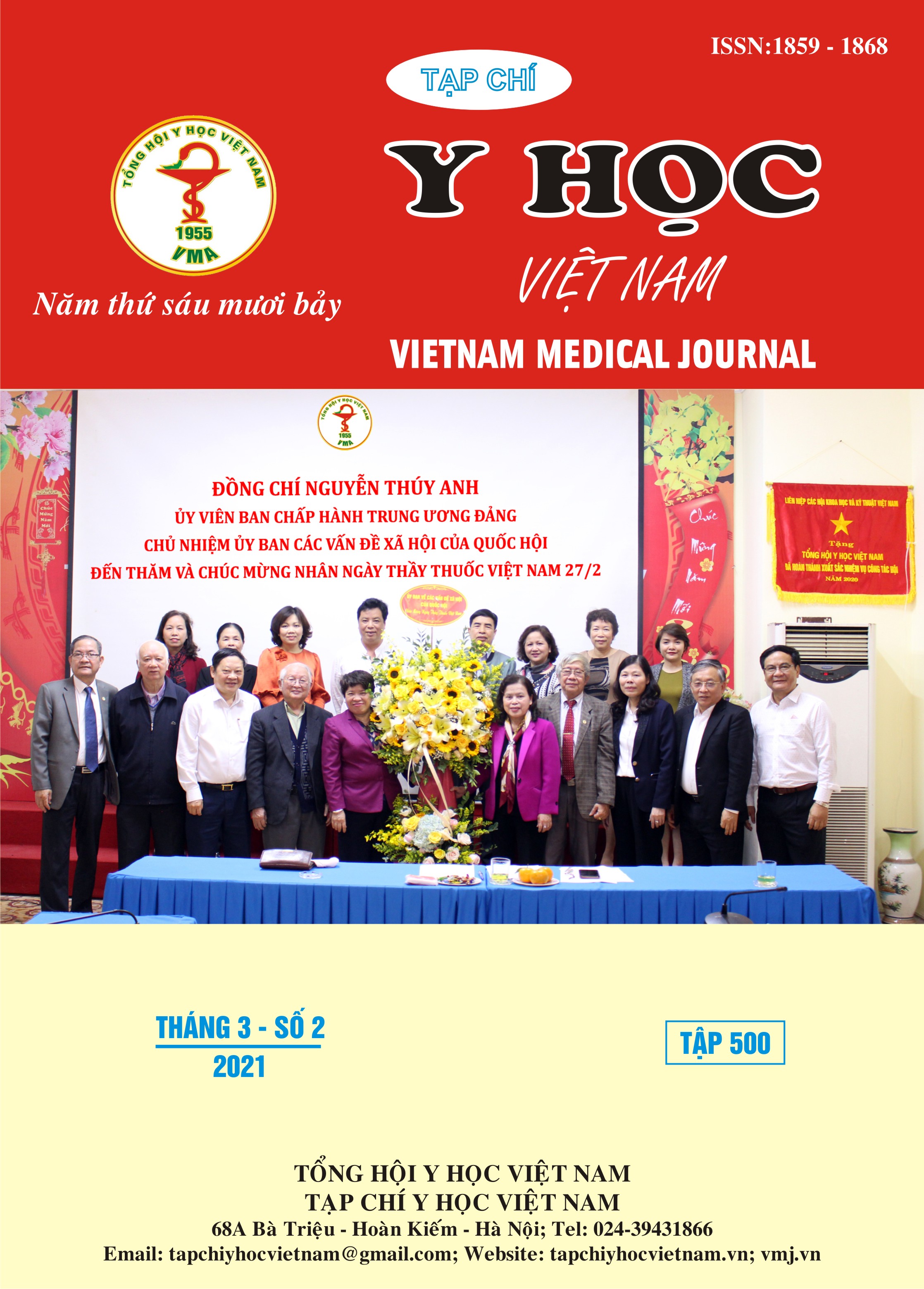EVALUATION OF TREATMENT RESULTS OF DEFINITIVE CONCURRENT CHEMORADIOTHERAPY IN STAGE III CERCICAL CANCER PATIENTS AT K HOSPITAL
Main Article Content
Abstract
Objectives: The aims of our study were to evaluate the result of concurrent chemoradiotherapy in FIGO III cervical cancer patients and late toxicities of this treatment method. Patients and Methods: 76 patients stage III cervical cancer (FIGO 2018) with good performance status (PS 0-2) were treated with three-dimensional conformal radiation therapy (3D CRT) combined with chemotherapy (weekly Cisplatin regimen), followed by computed tomography-guided high-dose-rate (HDR) brachytherapy. The primary end point was 3-year disease-free survival rate and prognosis factors, secondary end points were late toxicities of this treatment. Result: The 3-year DFS for the 76 eligible patients was 67.5%. On multivariate analyses, invasion of the lower third of vagina, short axis of pelvic lymph node diameter of ≥ 15mm, para-aortic lymph node metastasis were identified as adverse prognostic factors for DFS in stage III cervical cancer patients. The rates of grade 1-2 and 3-4 of gastrointestinal and genitourinary late toxicities were 44,7%; 18,4%; 9,2% and 2,6% respectively. Conclusion: Concurrent chemoradiotherapy with HDR brachytherapy for patients stage III cervical cancer improved progression-free survival while late toxicities were acceptable for major patients.
Article Details
Keywords
cervical cancer, stage III, chemoradiation
References
2. X. Liu, W. Wang, K. Hu và cộng sự (2020). A Risk Stratification for Patients with Cervical Cancer in Stage IIIC1 of the 2018 FIGO Staging System. Sci Rep, 10 (1), 362.
3. J. D. Cox, J. Stetz và T. F. Pajak (1995). Toxicity criteria of the Radiation Therapy Oncology Group (RTOG) and the European Organization for Research and Treatment of Cancer (EORTC). Int J Radiat Oncol Biol Phys, 31 (5), 1341-1346.
4. X. Liu, J. Wang, K. Hu và cộng sự (2020). Validation of the 2018 FIGO Staging System of Cervical Cancer for Stage III Patients with a Cohort from China. Cancer management and research, 12, 1405-1410.
5. K. Matsuo, H. Machida, R. S. Mandelbaum và cộng sự (2019). Validation of the 2018 FIGO cervical cancer staging system. Gynecol Oncol, 152 (1), 87-93.
6. K. Katanyoo (2017). Comparing treatment outcomes of stage IIIB cervical cancer patients between those with and without lower third of vaginal invasion. J Gynecol Oncol, 28 (6), e79.
7. S. Song, J. Y. Kim, Y. J. Kim và cộng sự (2013). The size of the metastatic lymph node is an independent prognostic factor for the patients with cervical cancer treated by definitive radiotherapy. Radiother Oncol, 108 (1), 168-173.
8. X. Li, L. C. Wei, Y. Zhang và cộng sự (2016). The Prognosis and Risk Stratification Based on Pelvic Lymph Node Characteristics in Patients With Locally Advanced Cervical Squamous Cell Carcinoma Treated With Concurrent Chemoradiotherapy. Int J Gynecol Cancer, 26 (8), 1472-1479.
9. J. M. Kirwan, P. Symonds, J. A. Green và cộng sự (2003). A systematic review of acute and late toxicity of concomitant chemoradiation for cervical cancer. Radiother Oncol, 68 (3), 217-226.


